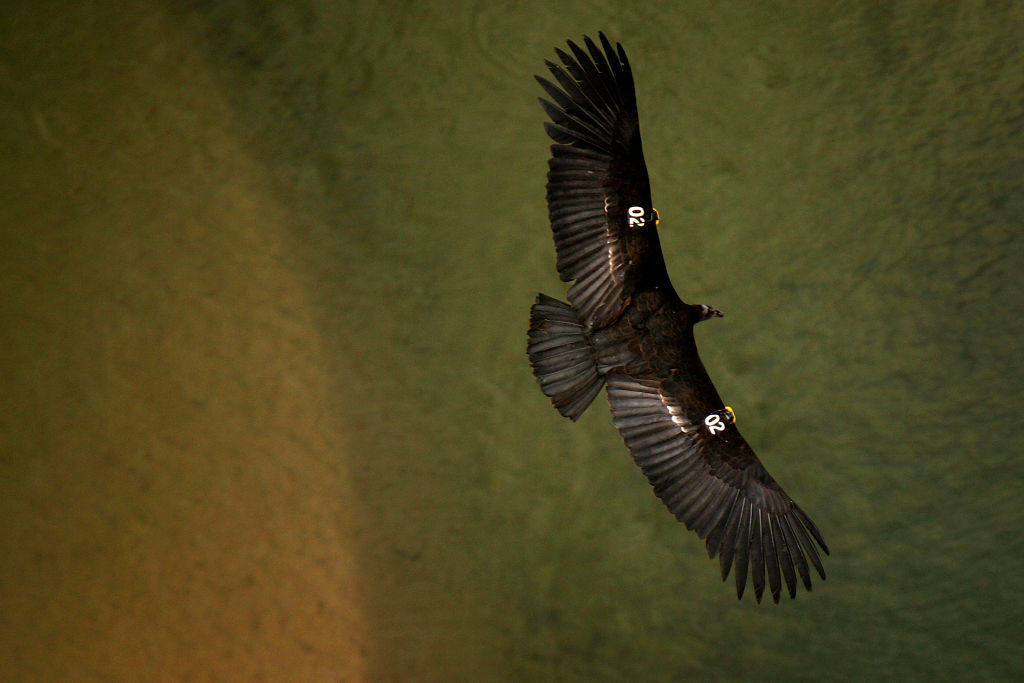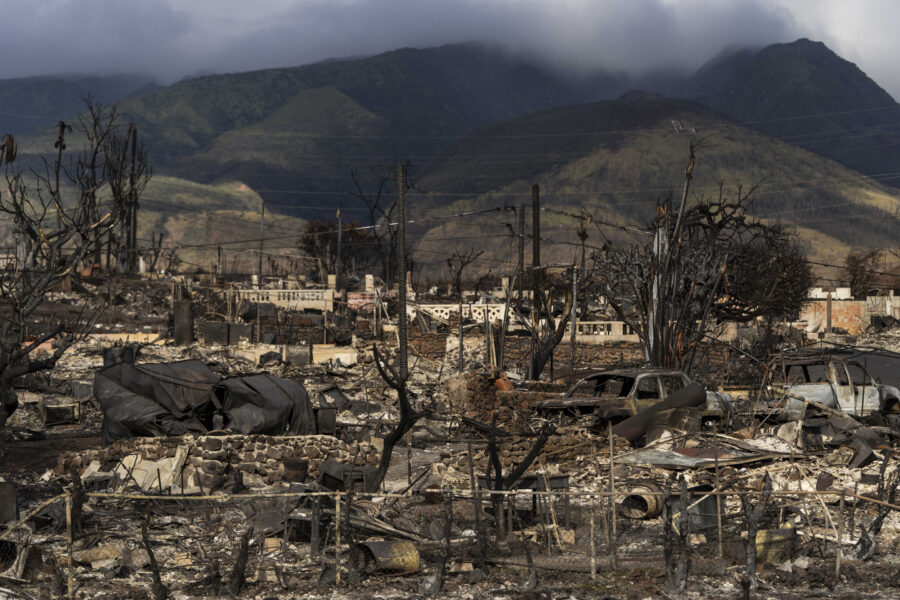Man gets 24 years in prison for fire that killed 12 condors
May 20, 2022, 3:35 PM | Updated: Jun 25, 2022, 8:55 pm

PAGE, AZ - MARCH 22: A rare and endangered California condor flies over the Colorado River in Marble Gorge, east of Grand Canyon National Park March 22, 2007 west of Page, Arizona. Condor managers taking blood samples from the 57 wild condors in Arizona both before and after hunting season find that all 57 condors test positive for contamination by lead matching the isotropic fingerprint of the lead commonly used in ammunition, and that those levels rise significantly by the end of the season. Many of the condors become so sick that biologists must re-capture them for lead-poisoning treatments. Several condors die each year. Experts believe the condors are ingesting the lead as they scavenge gut piles left behind hunters because lead bullets shatter and fragment inside the kill. Officials in Arizona are encouraging hunters to use copper bullets instead of lead-based ammunition and in California a coalition of conservation groups have sued the California Fish and Game Commission in an effort to force a ban on lead ammunition in Condor ranges. The condors in the Marble Canyon and Vermillion Cliffs area easily fly as far west as Lake Mead, by way of the Grand Canyon, and to Zion National Park and far into Utah. With a wingspan up to nine and a half feet, condors are the largest flying birds in North America. In 1982, when the world population of California condors dropped to only 22 and extinction was believed eminent, biologist captured them and began a captive breeding and release program which has increased the total population to 278, of which 132 now live in the wild in Arizona, California, and Baja California, Mexico. (Photo by David McNew/Getty Images)
(Photo by David McNew/Getty Images)
SALINAS, Calif. (AP) — A man who started a 2020 wildfire that killed 12 endangered California condors and seriously injured a firefighter was sentenced to 24 years in state prison, prosecutors said.
Ivan Gomez, 31, was sentenced Wednesday by a Monterey County judge for setting the Big Sur Dolan fire while illegally growing marijuana in the Los Padres National Forest, the county district attorney’s office announced.
The blaze erupted on Aug. 18, 2020, on the central coast northwest of Los Angeles. It destroyed 10 homes and an 80-acre (32-hectare) condor sanctuary in Big Sur that since 1997 had been used to release captive-bred condors into the wild. There weren’t any condors in the facility at the time but a dozen birds died as the blaze spread across 125,000 acres (506 square kilometers) of forest.
Gomez was arrested after state parks officers spotted the fire and received reports of a man throwing rocks at cars on a highway, authorities said.
Gomez, who was shirtless and sweating, confessed to setting the blaze and was carrying several lighters that matched others found at the spot where the fire ignited, the DA’s office said.
The fire nearly cost the lives of 14 firefighters who were trying to defend their fire station but were overrun by flames and had to deploy emergency shelters, according to a report this year by the Wildland Fire Lessons Learned Center, which promotes firefighter safety. Three were hospitalized with burns and smoke inhalation, including a fire captain who was seriously injured.
The fire was finally contained on Dec. 31, 2020.
Gomez was convicted of 16 felony counts, including arson, throwing rocks at a vehicle and 11 counts of cruelty to animals involving condor deaths.
The California condor is the largest North American land bird, with a wingspan of up to 9 feet (about 2.7 meters).
In the early 1980s, all 22 condors remaining in the wild were trapped and brought into a captive-breeding program that began releasing the giant vultures into Southern California’s Los Padres National Forest in 1992.
That flock has been expanding its range while other condors now occupy parts of California’s Central Coast, Arizona, Utah and Baja California, Mexico. Today there are more than 500 known birds, both in captivity and in the wild.













